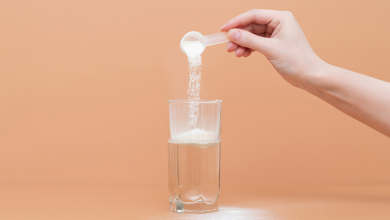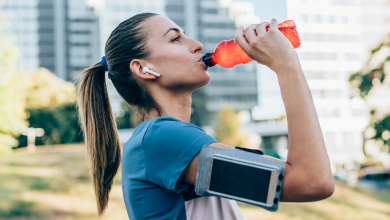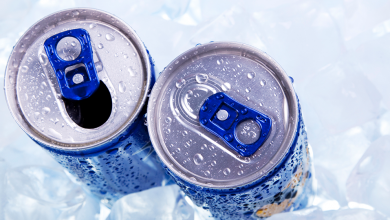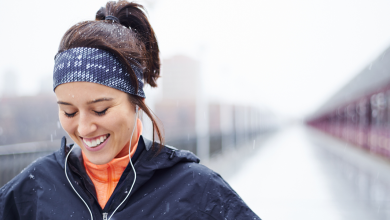What Is Gua Sha, and Does It Help With Muscle Pain?
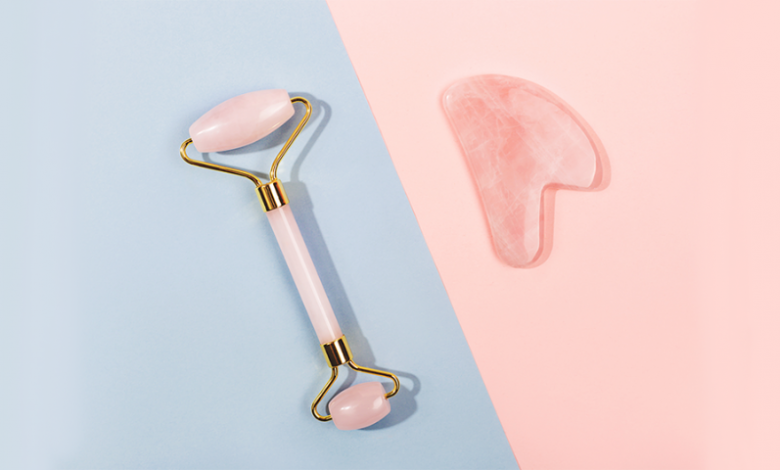
You might have seen Instagram influencers scraping their bodies or faces with smooth stones or metal tools to help (as they claim) promote blood flow and range of motion, and even relieve minor pain or soreness. The traditional Chinese medicine practice, called gua sha, is touted as a form of lymphatic drainage massage.
But before you try gua sha for yourself, there are some things you might want to know. Does it really work? What does the research show? Can you DIY at home? (And should you?)
Here’s what you need to know if you’re thinking of trying gua sha for the first time or making it a part of your recovery routine.
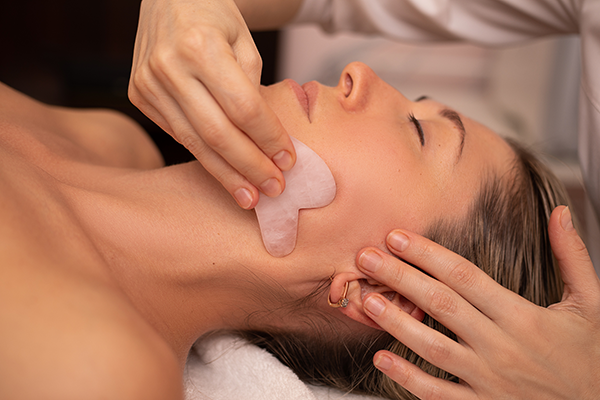
Gua sha is a practice in traditional Chinese medicine that dates back roughly 1,800 years. It’s essentially a massage: A practitioner rubs your body (or an area) with warm oil then uses a worn coin or spoon to briskly rub your skin in long lines. Other popular materials for these massage tools include rose quartz, jade, and metal.
Gua sha is also called “coining” or “scraping” in the US, says Theresa Marko, PT, DPT, MS, a doctor of physical therapy and owner of Marko Physical Therapy in New York City.
To get traditional gua sha, you’ll need to visit a traditional Chinese medicine practitioner or acupuncturist. However, there are a couple of similar practices used by other health-care professionals, explains Marko.
Chiropractors use the Graston technique, which combines gua sha and modern myofascial release. Physical therapists use “instrument-assisted soft tissue mobilization” (IASTM). Both therapies use stainless steel tools. While all three scrape the skin using tools, the intention is different. The Graston technique and IASTM focus on myofascial release, or breaking up scar tissue and muscle adhesions.
Gua sha “looks at pain as a symptom of imbalance,” explains Aliks K. Lessa, LAC, a licensed acupuncturist. It targets tight muscles with the goal of moving “stagnant” blood, reducing internal heat, and shifting negative energy in the body. However, the practice can leave behind red streaks and even some broken blood vessels at times.
Does Gua Sha Help With Muscle Aches?
Since gua sha is a form of massage, Marko says it is, in her professional experience, “really good for alleviating [soreness] from a muscle that might be in spasm or too tight.”
Using gua sha tools to scrape the skin in spots where you’re sore “coaxes the body to release that deeply embedded tension,” explains Lessa, and adds some elements of acupressure, too.
Research is limited but shows promise. In a small study, people with chronic neck pain treated with gua sha showed improvements after a week of treatment. They also had less pain while moving than those not given the treatment.
A study on chronic low back pain found similar improvements in pain scores after gua sha. However, these studies are small, with no placebo, so the results aren’t definitive.
Gua sha doesn’t work on all muscles, says Marko, since it’s a superficial treatment.
“If you needed something deeper, like your piriformis muscle in your buttock area, scraping wouldn’t really get to it,” she says. For those types of aches, she recommends other forms of massage or physical therapy.
How Often Should You Gua Sha?
Lessa suggests getting gua sha once a week to help ease muscle tension. The bruising and red streaking is normal, Lessa confirms, but she wants them to heal fully before her clients come back. “Ordinarily, a week is enough time for that to occur,” she says. You can integrate gua sha with other products to relieve sore muscles.
What Tools Are Used For Gua Sha?
You should only get gua sha from a trained professional. Here’s a peek at the tools they might use:
Roller tool
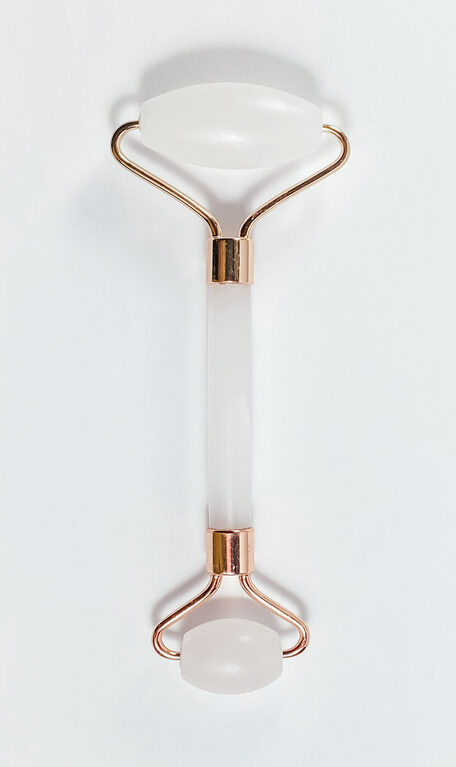
Among the gua sha tools, the roller might be the most popular and recognizable. It often comes with a big and small side, with the smaller side used for more pressure or precise scraping.
S-shaped tool
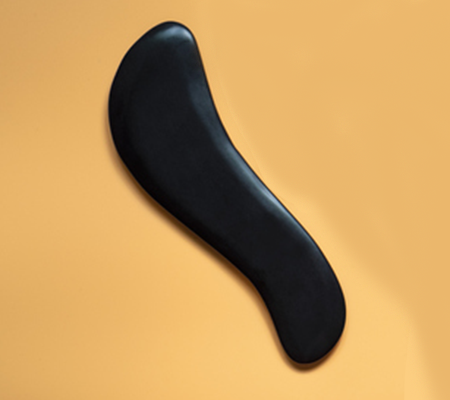
Lessa explains this one is versatile, “working around fine bones like the ankles, wrists, and vertebrae, but also for wider more muscular areas of the body like forearms, calves, and hips.”
Wing- or fin-type tool
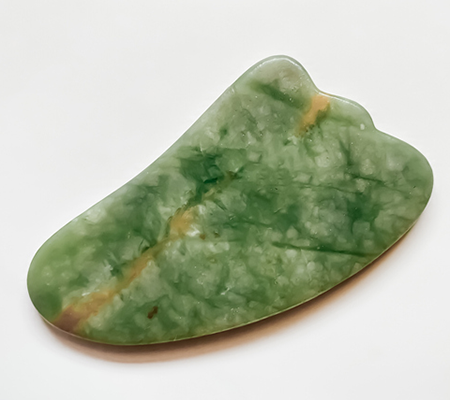
This tool is best for areas with “more muscle and less bone protrusion,” such as the sides of the neck, backs of the legs, and abdomen.
Dolphin-shape tool
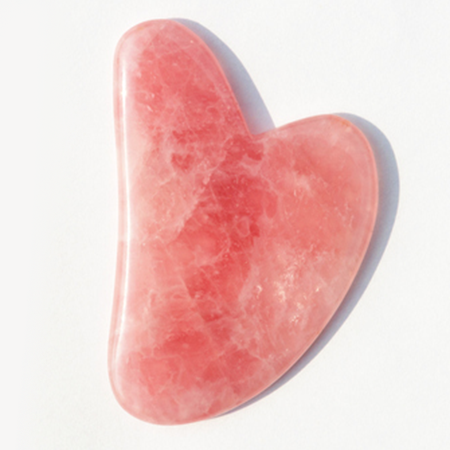
Lessa uses the flat edge for larger areas, like the IT band, and the dolphin edge for “curving around delicate bones like the shoulder blades, collar bone, knees, and ankles.” Another common area for use is the jawline.
Fish-shape tool
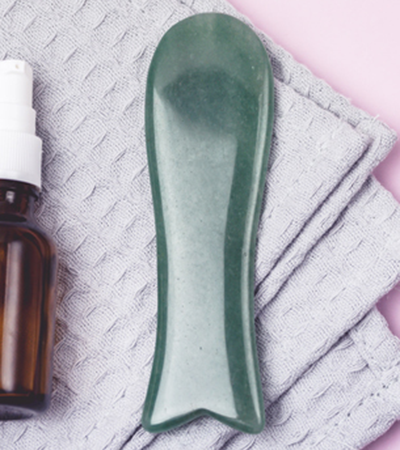
Lessa likes this as a facial tool, to “work around small, sensitive bones like the brows and nose” or even the cheekbone.
Spoon-type tool
The spoon side is perfect for scraping painful areas while the smaller side can be used for acupressure.
